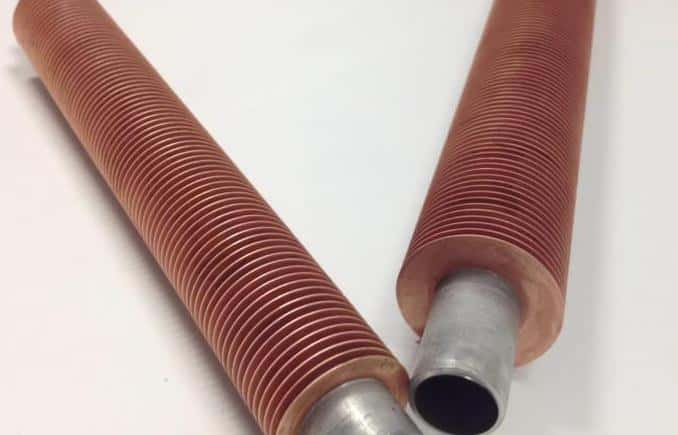Copper finned tubes are used as heat exchanging elements, and they work under the condition of high temperature flue gas for a long time. Performance.
Copper-finned tube manufacturers told us: Generally, when using copper-finned tube equipment, it is necessary to find out its main purpose. Generally, the more common ones are divided into finned tubes for air conditioning; finned tubes for air cooling; and industrial waste heat recovery.

Finned tubes; boilers: finned tubes for water walls, economizers, and air preheaters; and copper finned tubes for other special purposes
1. The heat transfer efficiency of copper finned tube equipment is high: the boundary layer is continuously broken due to the disturbance of the fins to the fluid, so it has a large heat transfer coefficient; at the same time, due to the thin partitions and fins, it has high thermal conductivity, So it can achieve high efficiency.
2. Compact structure: due to its expanded secondary surface, its specific surface area can reach 1000㎡/m3.
3. Lightweight: The reason is that it is compact and mostly made of aluminum alloy. Now steel, copper, composite materials, etc. have also been mass-produced.
4. Strong adaptability: Copper finned tube equipment is suitable for gas-gas, gas-liquid, liquid-liquid, heat exchange between various fluids, and phase change heat that undergoes a state change.

Through the arrangement and combination of flow channels, it can adapt to different heat exchange conditions such as counter flow, cross flow, multi-stream flow, and multi-pass flow. The heat exchange needs of large-scale equipment can be met through the combination of series, parallel, and series-parallel connections between units.
In the industry, it can be finalized and mass-produced to reduce costs, and the interchangeability can be expanded through building block combinations.
Although copper finned tube equipment has many advantages, its manufacturing process requires strict and complicated process.
It is easy to block, not resistant to corrosion, and difficult to clean and repair, so it can only be used in occasions where the heat exchange medium is clean, non-corrosive, difficult to scale, difficult to deposit, and difficult to block.
